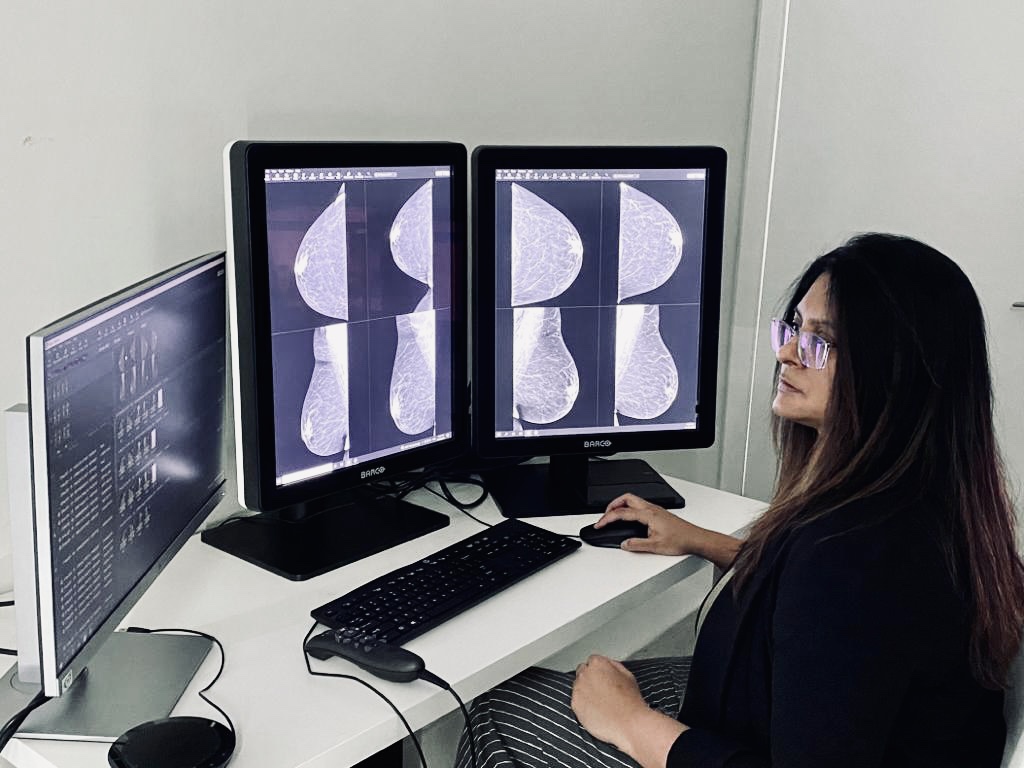Breast Cancer Awareness Month Profile: Dr. Nishigandha Burute
by Caitlund Davidson
 Dr. Nishigandha Burute, a radiologist and Northwest Regional Breast Imaging Lead.
Dr. Nishigandha Burute, a radiologist and Northwest Regional Breast Imaging Lead.It’s Breast Cancer Awareness Month, and we’re highlighting staff at Thunder Bay Regional Health Sciences Centre who play a vital role in a patient’s breast cancer journey. From cancer screening to cancer treatment, there are hundreds of caring professionals that you will meet along the way. Today, we’re sharing a Q & A from Dr. Nishigandha Burute, a radiologist and Northwest Regional Breast Imaging Lead.
Describe your role for us.
I work as a general and breast radiologist at TBRHSC and Linda Buchan Center for Breast Imaging. My clinical role includes interpreting imaging studies including mammograms, sonograms, radiographs and cross sectional exams. As a part of the radiologist’s team in Diagnostic Imaging, I report general and breast-imaging studies and perform image-guided breast interventions. A portion of my time is also dedicated to teaching and research.
What does it take to be a breast radiologist?
Schooling to be a breast radiologist includes a medical degree, residency and a fellowship. One of the primary roles of a breast radiologist is interpreting mammograms. Breast radiologists typically read a large volume of mammograms with an aim to identify cancers early. This requires a calm and composed mind with focused attention and image interpretation skills. Breast radiologists form part of a large team of personnel including sonographers, mammographers, navigators and administrative staff that are all integral to delivering comprehensive patient care in the breast assessment setting. Successful delivery of care requires all members of the team to work in collaboration with a compassionate, empathetic and patient centered approach.
What is unique about your role?
As breast radiologists, we are often among the initial health care professionals who interact with patients as a part of their cancer care journey. This gives us a unique opportunity to understand and address patient concerns during this sensitive period and provide support along with relevant knowledge and information to help them make informed choices about their medical care.
What inspired you to work in cancer care?
As a student I enjoyed canvas painting and sculpturing. After my medical school training, diagnostic imaging seemed like an obvious choice for specialization that would allow me to work with images while applying my medical knowledge in the diagnostic setting. During my residency in diagnostic radiology, I did an elective in breast imaging in a large cancer care center. The impact of breast radiology on patient outcomes inspired me to take up further fellowship training in breast imaging that led to work associated with cancer care.
How does your role impact care?
Breast radiologists have a direct impact on patient care through the detection of abnormalities on screening mammography, further workup of these abnormalities and obtaining tissue samples by biopsy. We interpret scans that help diagnose the stage of breast cancer, monitor treatment response to surgery and conduct post treatment follow-up. Radiologists work as part of a multidisciplinary team liaising with medical and radiation oncologists and surgeons at the cancer center to provide comprehensive care to individuals with breast cancer.
Any final thoughts?
Being a breast radiologist in Thunder Bay and the Northwest Region has personally been a very rewarding experience. Both as a part of the Diagnostic Imaging department and the Prevention and Screening Clinical Services team, I am privileged to work with an extremely compassionate and dedicated team of clinical colleagues, technologists, coordinators, clerical and administrative staff who strive to bring the highest level of care to patients and their families in our region.